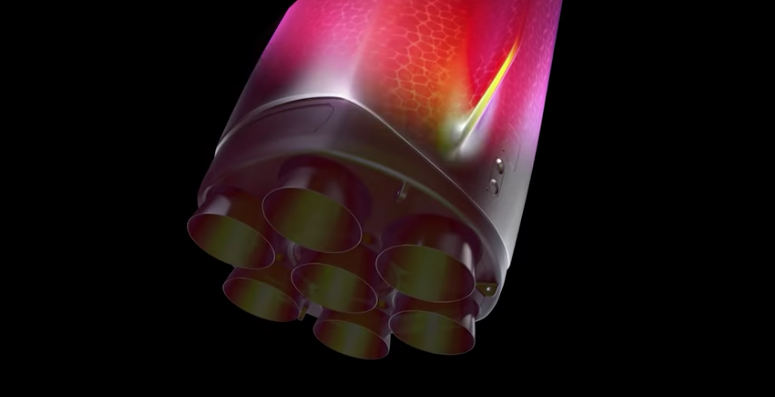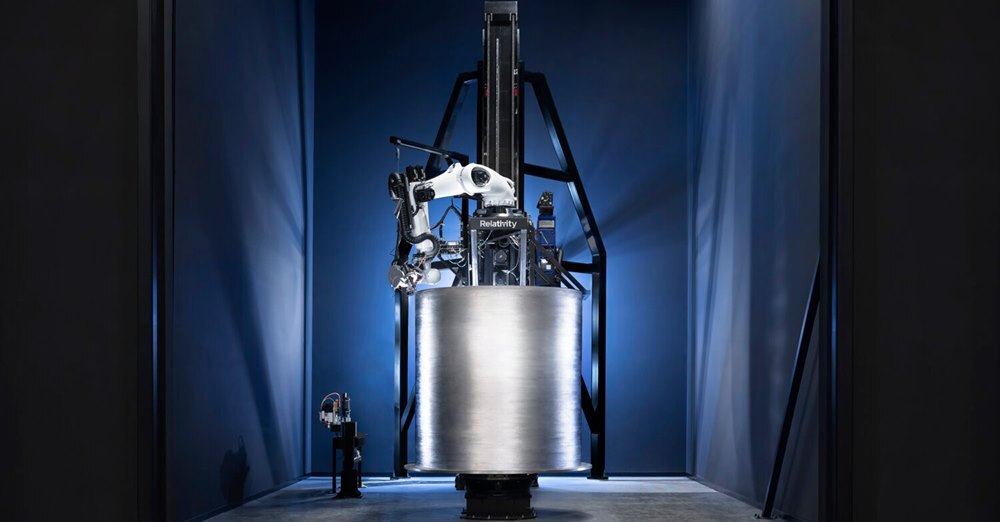3D printing has come to play a significant role in modern rocket construction, with key players like Rocket Lab, NASA and SpaceX all leaning on the technology in producing their spacecraft. Startup Relativity Space is now coming to the party with its freshly unveiled Terran R rocket, which it describes as an entirely 3D-printed launch vehicle that can be created from raw materials in 60 days, and which is fully reusable.
In revealing its plans for the Terran R rocket, Relativity Space describes it as a two-stage launch vehicle that stands 216 ft (66 m) tall with a 16-ft (4.9-m) diameter. The California-based company is designing the rocket to launch satellites and for multi-planetary travel, equipping it with an ability to lift 20,000 kg (44,000 lb) into low-Earth orbit, close to the payload capacity of SpaceX's Falcon 9 rocket at 22,800 kg (50,265 lb).

The rocket will be powered by seven of the company's Aeon R 3D-printed rocket engines that each generate 302,000 lb of thrust, while the upper stage will carry just one of its 3D-printed Aeon Vac engines. Relativity Space says the rocket will be fully reusable, including these engines, the first and second stages and the 5-m (16.4-ft) fairing used to protect its payloads. How it will retrieve all of this following launch is at this stage unclear, though such a feat won't be easy.
It also describes the rocket as the world's first to be entirely 3D printed. It will be manufactured using a mix of artificial intelligence and autonomous robots to print the structures and engines, a process the company says results in far fewer parts and an ability to turn raw materials into a standing rocket within 60 days. It also says this approach allows for unique aerodynamic features and geometries that wouldn't be possible with traditional production methods.

"Relativity was founded with the mission to 3D print entire rockets and build humanity’s industrial base on Mars," says Tim Ellis, CEO and co-founder of Relativity Space. "We were inspired to make this vision a reality, and believe there needs to be dozens to hundreds of companies working to build humanity’s multi-planetary future on Mars. Scalable, autonomous 3D printing is inevitably required to thrive on Mars, and Terran R is the second product step in a long-term journey Relativity is planning ahead.”
Relativity Space doesn't plan to launch the Terran R until 2024 from Cape Canaveral, but says it has already signed its first customer contract for the vehicle. The Terran R is actually the second rocket in the Relativity Space stable, following in the footsteps of its first and far smaller Terran 1, which will also be 3D printed and is set to launch for the first time this year. While it is 20 times smaller than the Terran R, the company says it has already secured nine contracts from private and public sector customers to use the Terran 1 to launch payloads into space.
"Together with our first rocket Terran 1, our second product, Terran R, will continue to take advantage of Relativity's disruptive approach to 3D printing – reduced part count, improved speed of innovation, flexibility, and reliability – to bring to market the next generation of launch vehicles," says Ellis.
The company also revealed it had closed a US$650 million Series E equity funding round that will enable scaling of the Terran R program and long-term infrastructure development.
You can check out the promo video for the Terran R below.
Source: Relativity Space






